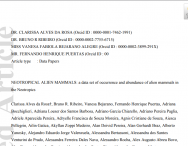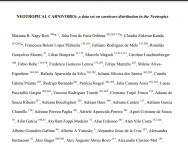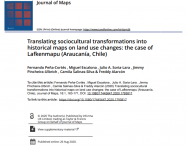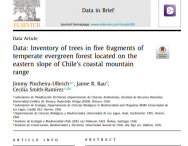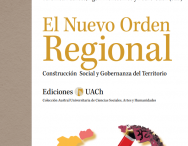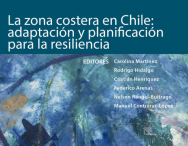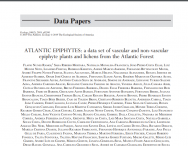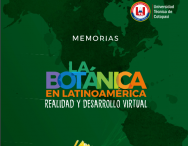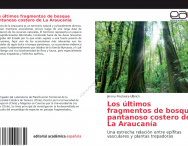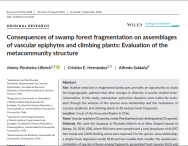Data from: Consequences of swamp forest fragmentation on assemblages of vascular epiphytes and climbing plants: evaluation of the metacommunity structure
Detalles del proyecto
Categoria
2018Publicaciones
Author
Pincheira-Ulbrich, J., C. E. Hernandez, and A. SaldañaDescripcion del proyecto
Aim: Habitat reduction in fragmented landscapes provides an opportunity to study the biogeographic patterns that drive changes in diversity in poorly studied metacommunities. In this study, colonization-extinction dynamics were indirectly evaluated through the analysis of the species-area relationship and the nestedness of vascular epiphytes and climbing plants in 30 swamp forest fragments. Location: Coast of the Araucanía Region in Chile. Taxon: Vascular epiphytes (16 species, mainly Pteridophytes) and climbing plants (15 species). Methods: We used the database in Pincheira-Ulbrich et al. (2016), where 904 trees were sampled and a total abundance of 41,097 fern fronds and 3,098 climbing stems were reported. For the species-area relationship, a simple linear regression model (SLR) and two models that consider the spatial autocorrelation of species richness among fragments, generalized least squares (GLS) and simultaneous autoregressive model (SAR), were compared. For the species nestedness, the nestedness measure based on overlap and decreasing fills (NODF) and weighted nestedness metric based on overlap and decreasing fill (WNODF) indexes were used on presence-absence and abundance matrices, respectively. These matrices were sorted by area size and distance from the largest fragment, and then contrasted with the probability distribution of a randomized null model based on 10,000 simulations. Results: The results showed that the area size had a significantly positive effect on epiphyte species richness, while spatial autocorrelation played a fundamental role in explaining the richness of climbing plants. Both metacommunities had a general nestedness structure in terms of species incidence, which was determined first by area size and secondly by isolation. Main conclusions: Our results indicate that local colonization processes determined by species’ dispersal capacities could be the predominant mechanism for the spatial configuration of climbing plant species composition. On the other hand, selective extinction determined by patch size could characterize the spatial structure of epiphyte species’ composition.


